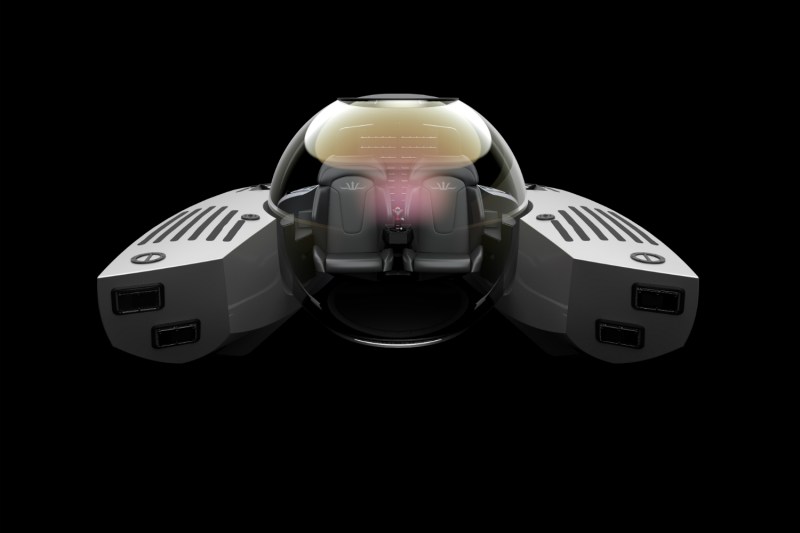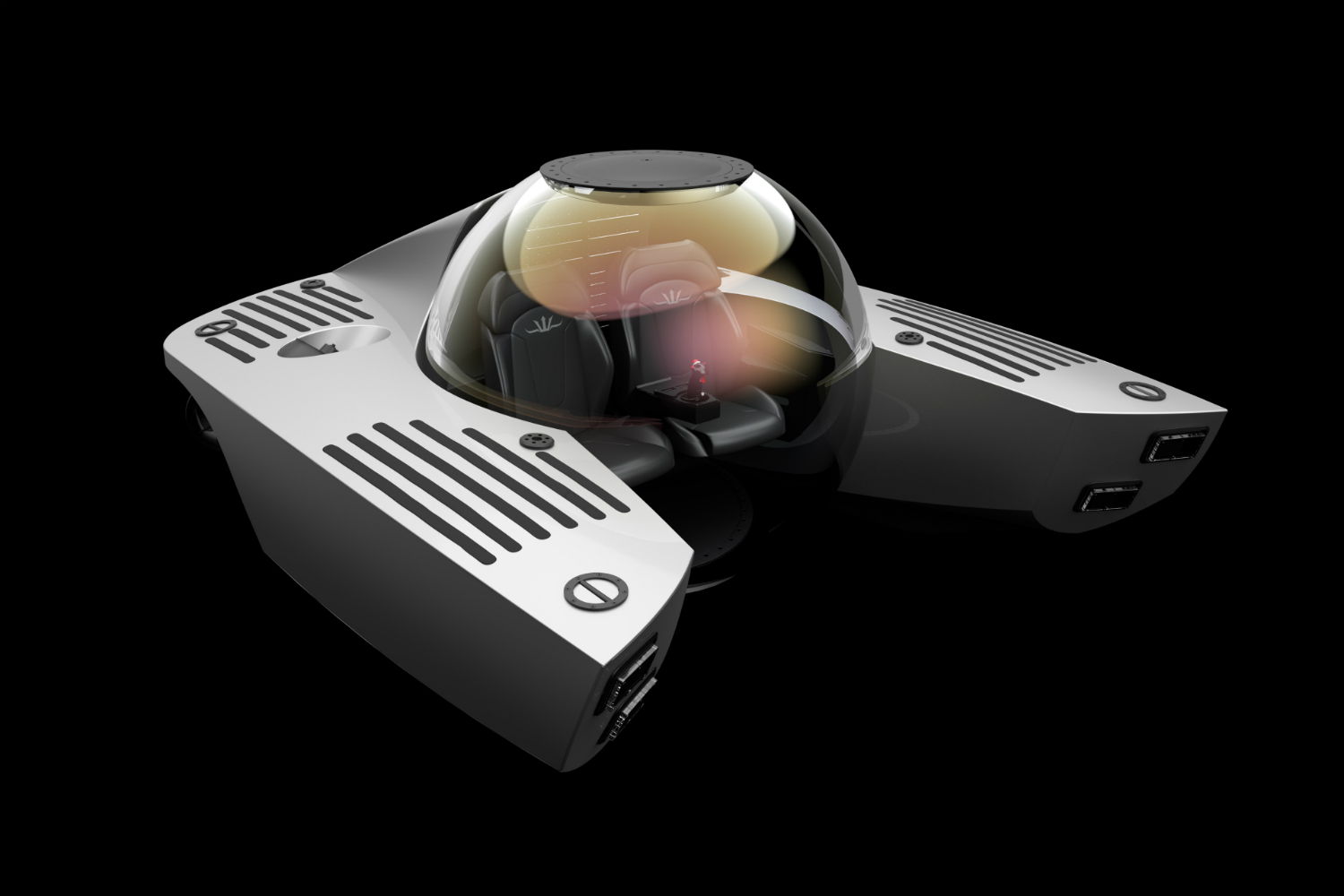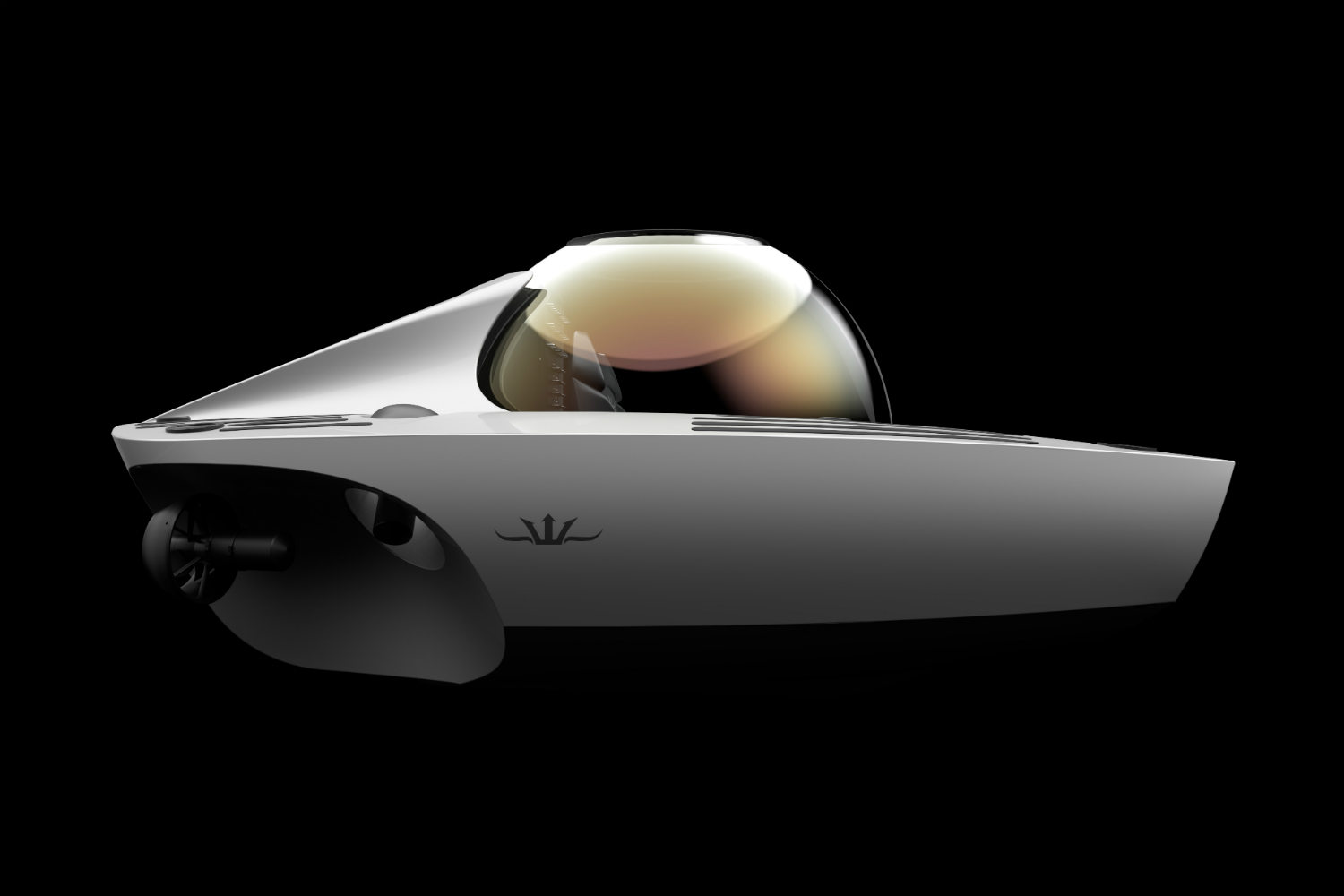
Given that water covers 71% of Earth’s surface, it’s obvious that owning a boat opens a vast new world of possibilities to explore. But, even sailors know that still leaves a whole lot more to explore under the water. For that, you need a legit personal submersible. Introducing: the Triton 1000/2 MKII Submarine.
The Triton 1000/2 MKII is the next iteration of Triton Submarines’ already capable 1000/2 model. Their entry-level submersible is designed to be compact and lightweight for easy transporting aboard most luxury yachts in the sub-500GT sector. At just 10.5 feet in length by 8.8 feet in width, it slots into even the smallest yacht garages. The 6,600-pound dry weight also means it’s easily movable with a modest marine crane.
The surprisingly swanky cockpit seats two with a list of amenities that rivals most luxury cars. Climate control, USB ports, a premium audio system, and a bevy of touchscreens are all standard. The entire space is encased in a 270-degree sphere with panoramic views around and straight down. Triton is quick to note that their sphere features a proprietary thermoformed polymerized acrylic technology for perfect optical clarity. Passengers can cruise to depths of 1,000 feet for up to 10 hours at a top speed of four knots.
Triton Submarines has long been the gold standard for submersibles. If 1,000 feet down just isn’t deep enough, the company’s premium line of Ultra-Deep Diving Submersibles is capable of taking you anywhere that’s covered by ocean. The Triton 7500/3 is the deepest diving, transparent-hulled submersible in the world capable of exploring almost a mile and a half down. When you need to go even deeper, however, the flagship Triton 36000/3 is ready for “full ocean depth.” It’s the next-generation of the Triton 36000/2 which was used earlier this month in the deepest submarine dive in history – a world-record 35,853 feet in the Mariana Trench. Of course, if money is no object, well-heeled expeditioners can work directly with Triton on a custom, Pimp My Ride-style build complete with cupholders and a dash-mounted shark tank.
The Triton 1000/2 MKII is available for around USD $2.7 million. But, if you’re the sort of hotshot who’s shopping for a personal submarine, does the price really matter?





